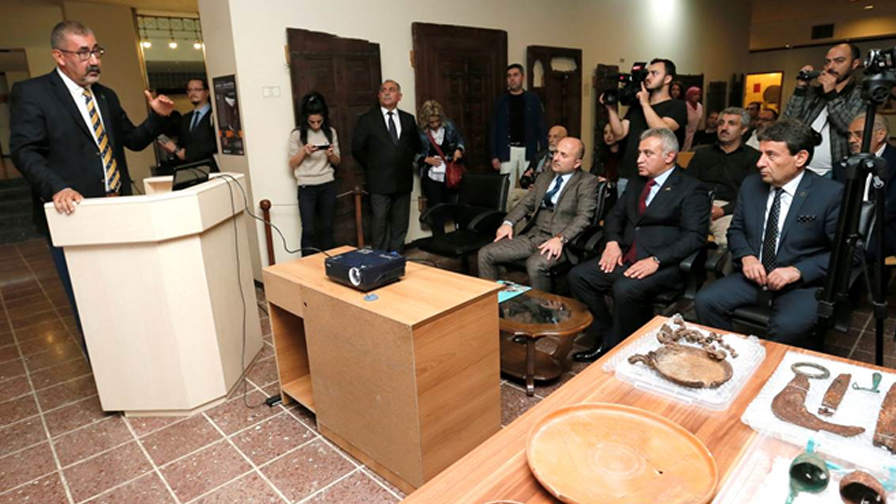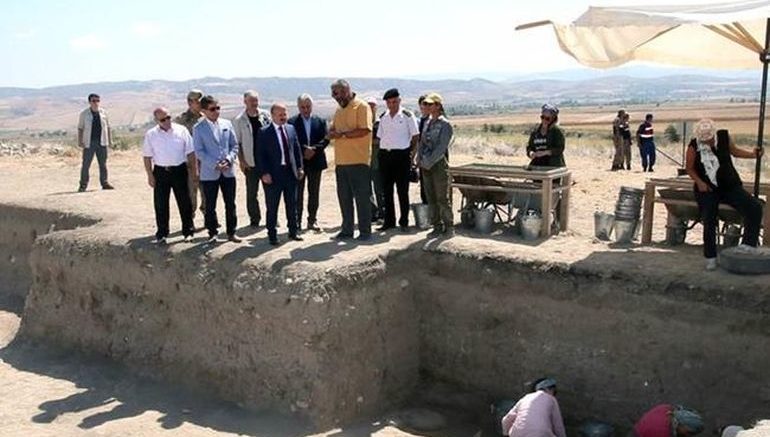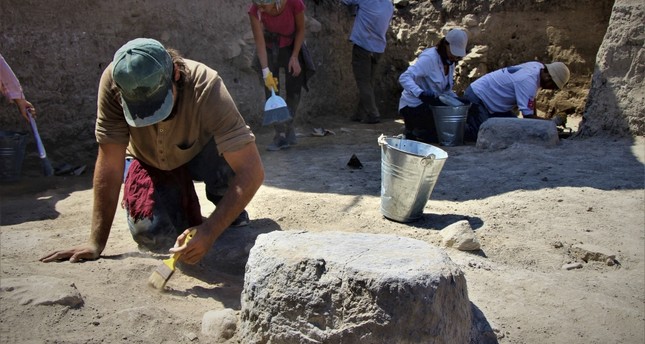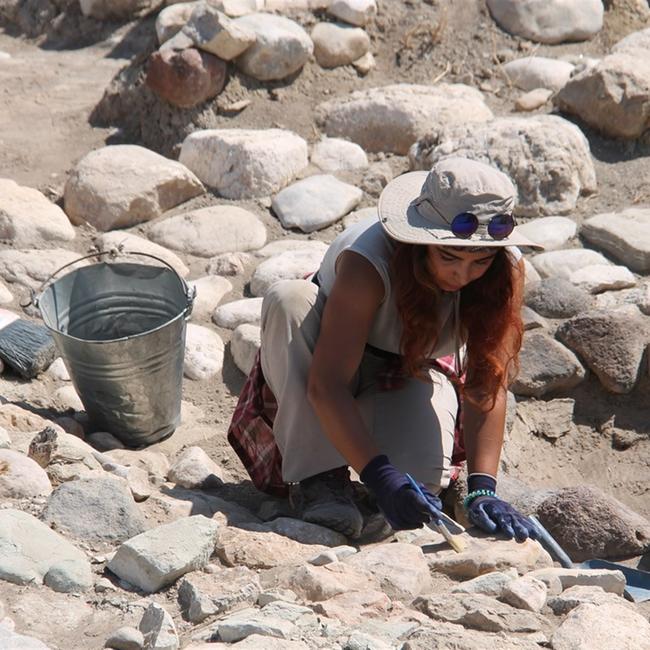The article “2500-Year Old Achaemenid Persian Palace Possibly Found In Turkey” was originally posted on the Turkish Daily Sabah News Agency on September 6, 2018. The report published below is a subsequent version by Dattatreya Mandal on the Realm of History website on September 10, 2018.
Kindly note that the head of the excavations alluded to in the article is Dr. Şevket Dönmez who is an Archaeology Professor at Istanbul University.

Professor Şevket Dönmez of Istanbul University in a news conference (November 6, 2017) attended by Turkish academics and reporters (Source: Ana Haber). Dönmez was presenting his 2017 findings of Zoroastrian religious and cultural artifacts at Oluz Höyük in Asmaya province, Turkey. Note the Zoroastrian artifacts also on display at the lower right side of the photo … for more click here …
Dr. Dönmez’s discovery of the ancient Persian Oluz Höyük settlement in Toklucak village, Amasya province, Turkey in 2017 was reported in Kavehfarrokh.com (click this line for more information) and was also also published in the Winter 2017 edition of the FEZANA (Publication of the Federation of Zoroastrian Associations of North America) journal.
= = = = = = = = = = = = = = = = = = = = = = = = = = = = = = = = = = = = = = = = = = = = = = = = = = = = =
In one of our articles about the Achaemenid Persians, we talked about how their ancient empire (circa 6th century BC) stretched from Anatolia and Egypt across western Asia to the borders of northern India and Central Asia. And pertaining to their imperial presence in Anatolia, researchers from the Istanbul University Archaeology Department have excavated remains of a (probably) Persian palace at the Oluz Mound in the Göynücek district of Amasya province, northern Turkey. The site in itself boasts an expansive urbanized area of 920 ft x 850 ft and has been under excavation since its discovery in the years between 1997 and 99.

Turkish archaeologists and officials at the site of the excavated Achaemenid palace at the Oluz Mound in northern Turkey’s Amasya province (Source: Daily Sabah).
According to Dr. Şevket Dönmez, the leader of the current excavation project, the site, during circa 450 BC, was probably governed by a branch of Achaemenid Persians. However, the incredible discovery of the palace itself, along with other significant structures, was made in this very year:
“New units of this city have been revealed. We now know about a path, a mansion and a fire temple. All these are firsts in world history. A reception chamber with columns and a throne chamber have also started to emerge for the first time this year. We are in the beginning phase of the excavation work for these chambers. This current phase and discoveries are very exciting. These belong to a very significant period of the Anatolian Iron Age, Anatolian Old Age, and Persian archaeology.”

Turkish archaeologists engaged in the excavation of Achaemenid columns in the Persian palace (Source: Daily Sabah).
Dr. Dönmez further added how the site also harks back to older Iron Age cultures, like the powerful Hittites, thus alluding to its enigmatic status in the ancient world as a place of sacredness:
“They are very important discoveries which will add to their identity and uniqueness. We have found six column bases so far. A clear plan has not yet been revealed, but hopefully we will find it in one or two years of excavation works. We found a bull figurine belonging to the Hittite period this year during excavations. There is a very big Hittite city under the Persian city. We think that it is Shanovhitta. It shows us that this is a traditional sacred city and every new civilization built a temple here. We did not know that we would find such a Persian city. Neither such a temple nor such a reception chamber…we did not expect any of this.”

One of the Turkish archaeologists engaged in the excavation of the structures of the Achaemenid palace at the Oluz Mound (Source: Daily Sabah).
As further averred by Dr. Dönmez:
However, we came across an entirely different situation. The entire world has started to watch Oluz Mound on the basis of Mid-Anatolian and Anatolian archaeology. I believe that it has started to become a significant center in updating and changing Anatolia’s religious history after Göbeklitepe.”



